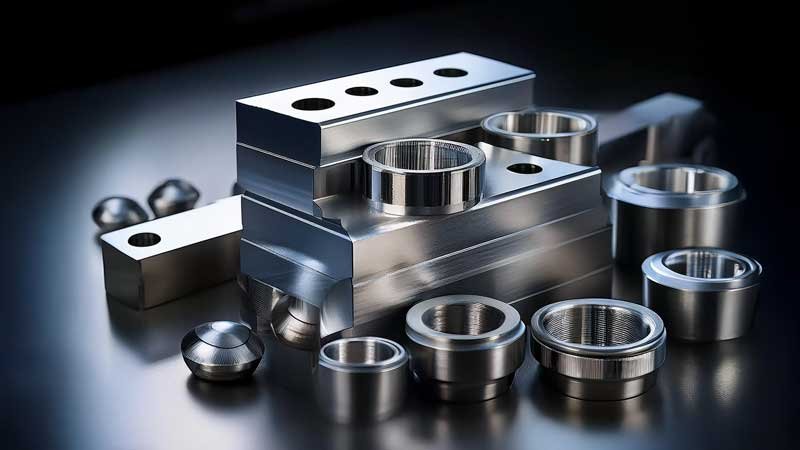Nickel Alloy Machining Methods
What is Nickel Alloy
Nickel alloy is a kind of metal material with nickel (Ni) as the main component and other metal elements (such as chromium, iron, molybdenum, copper, aluminum, titanium, etc.) added to improve specific properties. Due to its excellent corrosion resistance, high temperature strength and oxidation resistance, nickel alloy is widely used in aerospace, nuclear energy, marine engineering, petrochemical, medical equipment and other fields.
Classification of Nickel Alloys
Corrosion Resistant Nickel Alloy
Typical alloys:Monel、Hastelloy、Inconel
Main applications: chemical equipment, marine engineering, pharmaceutical equipment
Features: Anti-corrosion to acid, alkali and salt solutions, suitable for harsh environments
High temperature nickel alloy (heat resistant alloy)
Typical alloys: Inconel, Nimonic, Waspaloy
Main applications: aircraft engines, gas turbines, nuclear reactors
Features: high temperature creep resistance, oxidation resistance, suitable for high temperature working environments
High Strength Structural Nickel Alloy
Typical alloys: Incoloy, Rene alloy
Main applications: aviation structural parts, turbine blades
Features: high strength, high toughness, excellent fatigue life
Electrical resistance and electromagnetic properties of nickel alloys
Typical alloys: Constantan, Permalloy
Main applications: resistor elements, magnetic materials
Features: high resistivity, low hysteresis loss
Nickel Alloy Machining Methods
Shaft and cylindrical parts are suitable for turning, such as turbine shafts, valves, and flanges.
(1) Recommended tool materials are PVD-coated carbide (TiAlN, AlCrN), ceramic (SiAlON), and CBN (cubic boron nitride).
(2) Blade type: Blades with negative rake angles to reduce built-up edge.
(3) High torque and high rigidity machine tools are required for turning.
(4) High pressure cooling should be selected for machining cooling.
Rolling bearings and housings suitable for milling
(1) Machine tools with strong rigidity and high precision, suitable for high-speed milling with carbide/ceramic tools.
(2) Direct-connected spindle to reduce heat accumulation
4. Nickel alloy machining precautions
Tool material
PVD coated carbide (TiAlN, AlTiN, AlCrN): suitable for turning and milling, can improve wear resistance and heat resistance.
Ceramic tools (SiAlON): suitable for high-speed cutting, such as Inconel 718, high temperature resistance, suitable for intermittent cutting.
CBN (cubic boron nitride) tools: suitable for finishing of hardened nickel alloys, strong resistance to chipping.
Cooling method
High-Pressure Coolant (HPC, 70-100 bar)
Minimum Quantity Lubrication (MQL, Minimum Quantity Lubrication)
Oil-based coolant (suitable for grinding)
Machining strategy optimization
(1) Avoid work hardening
Remove the hardened layer in one go: To reduce repeated cutting of the hardened surface, a larger cutting depth (Ap ≥ 0.5mm) is recommended.
Avoid low feed rates (Fz ≥ 0.05 mm/tooth) to prevent tool slippage and hardening.
(2) Tool changing strategy
Shorten the tool life management cycle to avoid excessive wear and tear that may lead to workpiece scrapping.
Regularly replace tools to ensure stable machining accuracy.
(3) Adopting optimized path
Down milling is better than reverse milling, reducing tool wear and improving surface finish.
Stepped Cutting reduces the load of a single cut.
5. Smartlathe machining solution
Nickel alloys are extremely difficult to process: high cutting forces, low thermal conductivity, fast tool wear, and severe work hardening. These challenges all test the performance and stability of CNC lathes. Smartlathe's professional CNC lathes can provide you with stable and efficient solutions for nickel alloy machining. Choose Smartlathe to make your production smarter and more efficient!





